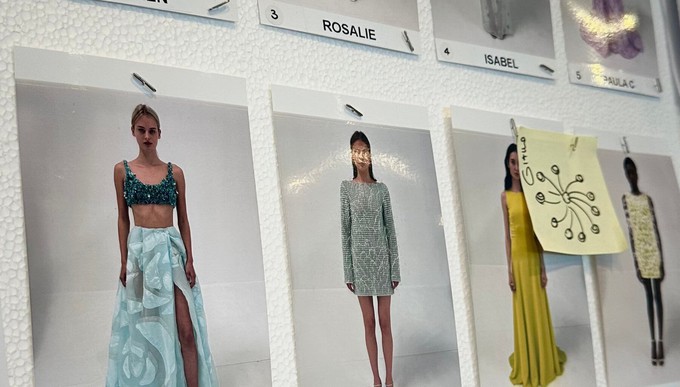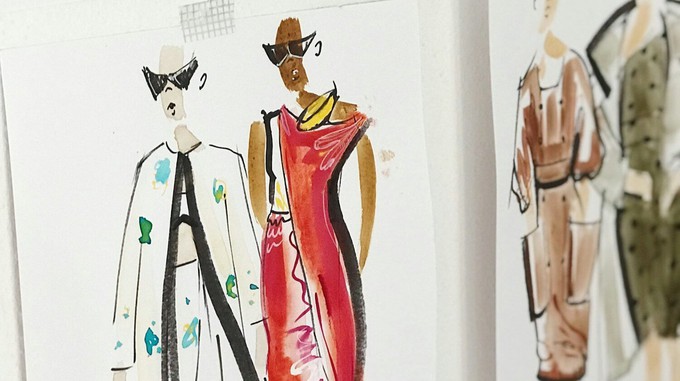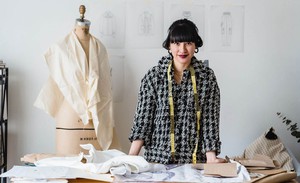- Clothes
- Bags
- Accessories
-
Inspiration
- Shoes
AI and Fashion: What We're Excited & Concerned About

AI is everywhere, and the fashion industry is no exception.
Is it good or bad news, though? In our opinion… both (and that's in our roles as a mindful consumer and co-founder of an ethical clothing platform).
We're well aware AI is here to stay, of course. So, why are we writing this?
To make this topic clearer for fellow eco-conscious consumers and offer some food for thought that might even start a productive conversation.
So, here’s what we believe should be explored more and what should be looked into ASAP when it comes to artificial intelligence in the fashion industry.
AI in fashion examples
How is AI being used in the fashion industry? Well, it’d be quicker to list how it’s NOT being used!
To give you an idea, though, here are some examples:
- AI-generated fashion designs
- Trend forecasting
- AI models
- Supply chain forecasting
- Inventory optimisation
- Personalised marketing and eCommerce recommendations based on buyers’ behaviours
Basically, AI in fashion is used from design to production and beyond.
In this article, we're mainly focusing on how it impacts the way clothes are made and marketed by brands. Just for the record, though, AI is also used in lots of other scenarios, like virtual fitting rooms and smart mirrors in physical stores or tools to help consumers dress like their favourite celebrities.
Benefits of AI in fashion

AI can make things easier for small and ethical brands
Sustainable brands are working so hard to have a positive impact on the planet and the people making our clothes. Unfortunately, though, it’s harder for them to stay in business.
In a nutshell, they have much lower margins (since they choose eco-friendly but more expensive materials and production practices and they pay workers fair wages), they’re not relying on frequent purchases because they encourage mindful consumption, and they’re competing against fast fashion giants and their unsustainably low prices.
As startup founders, we relate to their challenges. So, we're glad AI can support these brands, helping them:
- Cut costs (for example, with smarter inventory planning)
- Save time, like turning mood boards and descriptions into concepts faster
- Sell more through smart and personalised product recommendations
It can have a positive environmental impact
AI in the fashion industry can be used to reduce waste and lower a brand’s environmental footprint.
For example, it optimises the supply chain through:
- Inventory management, helping brands avoid overproduction and therefore reduce unsold stock (which would otherwise be burnt or sent to landfills)
- Streamlining production schedules, reducing a factory’s energy use
- Identifying lower-impact materials and production methods (for example, minimising water and chemical usage, or adapting patterns during the cutting process to minimise waste even further)
- Smarter logistics, such as finding the shortest and greenest delivery routes when shipping products
Disadvantages of AI in fashion

AI also has a negative environmental impact
It’s tricky because, as seen before, the right use of AI in the fashion industry can reduce waste and energy consumption. At the same time, though…
- AI needs a lot of resources – As well as using plenty of energy, AI is thirsty, and it especially needs water to cool its servers. This really depends on the tool, but to give you an idea, a ChatGPT conversation (20-50 questions) drinks the equivalent of a 500 ml bottle of water
- It makes fast fashion even faster – For example, it forecasts and accelerates trends, speeds up production, and encourages overconsumption by helping people dress like their favourite celebrities or by showing them extremely targeted recommendations. So, more production -> more resources and higher energy use -> more waste
It steals from designers
This is still a grey area, but many AI fashion tools generate their designs by scraping what’s already out there.
For example, some designers filed a lawsuit against SHEIN, claiming its AI algorithms generated exact copies of their original designs.
And the worst part? Indie designers and small brands were already having their designs ripped off by ultra-fast fashion giants. So, with AI, I can only see this getting worse.
It takes away jobs
Fashion was already a competitive industry, really hard to get into.
Now, AI is making things even more challenging for various creative professionals, like stylists, photographers, models, and PR strategists.
It can lead to wokewashing
Artificial intelligence in fashion is heavily used in marketing, especially in AI-generated models and promotional photos and videos.
But here’s the thing, instead of actually hiring a diverse range of models, AI allows brands to showcase diverse models without actually paying them. Thus, appearing more inclusive than they actually are.
We also have some concerns around “creativity”
It’s great that AI is making things easier and faster for designers but… what’s going to happen to their creativity when you can just “add a reference photo and describe what you have in mind” using an AI design generator? How about clothes and collections carrying a personal touch and story?
For example, at Project Cece, we also partner with brands drawing inspiration from their country’s traditions or adding a modern twist to folkloristic designs. Isn’t that special?
So, we hope brands choose to use AI only to augment and speed up their work, not to fully replace the creative vision of their designers. Let AI do the boring stuff and keep the creativity to ourselves!
“AI in the fashion industry” is an ongoing conversation
Overall, AI in the fashion industry comes with lots of advantages and concerns at the same time.
The conversation will keep evolving—so, who knows, our stance might change, too—but we’d like to encourage everyone to be mindful of its environmental and ethical implications while making the most of its benefits (and let’s not make fast fashion even faster).
Share our story
Related articles
How the Fashion Industry Works: From Seed To Your Wardrobe
What and who’s behind the clothes you wear? How does each phase impact the planet? Discover how the fashion industry works in practice, stage by stage.
6 Human Activities Affecting the Environment: How Clothes Fit In
From cotton pesticides to polyester’s emissions, here’s how fashion contributes to all these human activities' impact on the environment (& what we can do)
What New Sustainable Fabrics & Materials Are Designers Using?
Recycled plastic, coconuts, and even… milk! Here are some of the most innovative new sustainable fabrics to reduce the environmental impact of clothes.
Project Cece is a platform that collects ethical fashion from vetted brands and shops in one place. Browse ethical fashion for women and men and find items that fit your style, budget and values!
_large.png)


